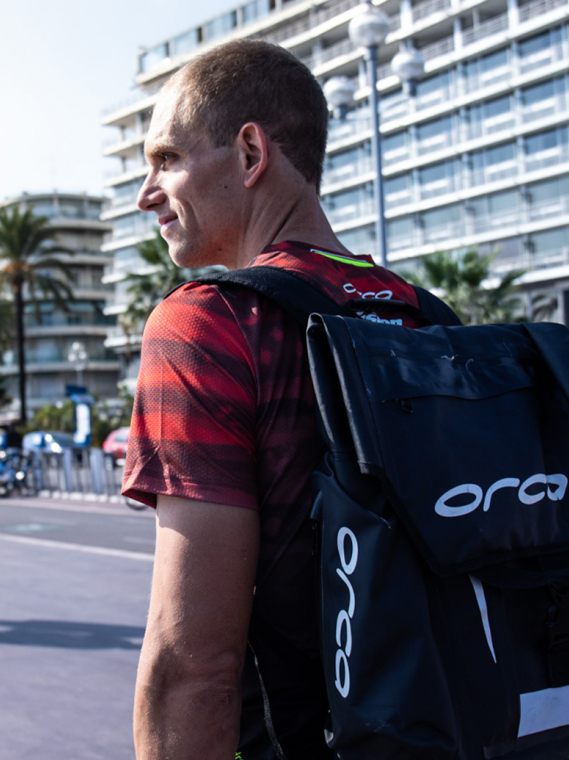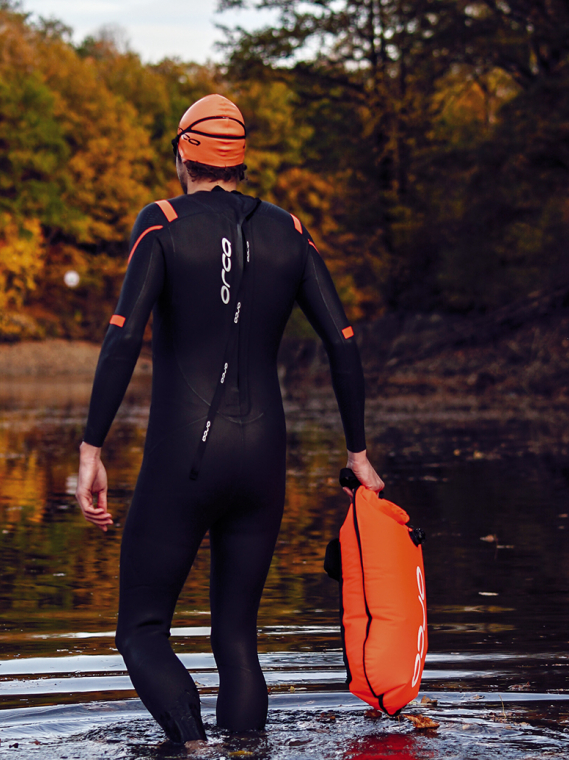
Swimming injuries and how to avoid them
Training Programs
September 23, 2021
How familiar is this? You do not experience any problems, so you do not see the need for prevention in the sense of strength, stretching, coordination...
There’s nothing better than the feeling of being at peace during an open-water swim. You have your rhythm, you’re in the zone, and there’s nowhere you’d rather be.

STARTING THE SWIM
There’s nothing better than the feeling of being at peace during an open-water swim. You have your rhythm, you’re in the zone, and there’s nowhere you’d rather be. But then there’s what often happens. And it’s exactly none of that at the start of the swim.
Fortunately, there are strategies you can use to get your head in the game early (or, really, at any time in the swim), whether you’re headed out for an open-water 5K or 10K+ or a triathlon. Here’s how to smooth out your swim start—even if the ocean, lake, or river is rough.

BEWARE THE F-WORD
In swimming, the f-word is “far.” I’ve seen many swimmers look out on a course on race morning and say, “you mean I have to swim to that buoy all the way out there?” A couple of things about that:
• It’s really hard to judge distances on the water, especially if you don’t know how tall the buoys are. Maybe that buoy at the turnaround is much shorter than you think, making it look “really” far away. “All the way” might really not be that far; don’t get ahead of yourself by deciding that it is.
• No matter what size it is, a key to getting to any and all of the buoys is to remind yourself of what it is that gets you through any swim. Does thinking about your hand entry make you a better swimmer? Working a strong pull? Keeping your stroke rate up? Whatever moves you through the water well is all you need to focus on. Think about and execute those things, and the distance will take care of itself.
Part of what gives power to the f-word is that it’s making you worry about the future. Anything you can do to bring yourself back to the present—focusing on your rotation, moving your arms at a familiar, comfortably challenging cadence, keeping a low hand—helps keep that future worry from creeping in.

BE CURIOUS
The late swim coach Anne Cleveland would remind me that “you never get in the same water twice.” Indeed, the start of every swim is like a blind date with the water. You might know some of its stats—like how fast the current is moving and the water temperature—but that’s not the same as getting in there and meeting it.
To get a feel for what the water’s giving you that day—what kind of waves, how the water temperature feels along with the air—it’s great to do a practice swim, but that’s not always possible. When it’s not, it helps to adopt a sense of curiosity when you get in. Take the first moments to notice how the water feels and tastes and moves and how you’re going to work with it that day. And working with it is essential. You always have to accept what the water gives you (you’re never going to win a battle with the water, especially in the ocean). By being aware that the first few moments may be a bit of a get-acquainted dance, you won’t be surprised and thrown off balance when they are.

HAVE A FEW WORDS
World Champion triathlete Chrissie Wellington wrote the words to Rudyard Kipling’s poem, If, on her water bottle, and its first words are worth keeping in mind: “If you can keep your head when all about you/Are losing theirs…”
To keep your head, you don’t need those particular words. But you should have one or more at hand to repeat to yourself when future worry starts to creep in (figure out your word or words long before race day). One athlete I coached would use the word “athlete” as her mantra, breaking it up over two strokes until she sank into her swim rhythm. Use whatever works and feels meaningful for you.
If you don’t want to think that hard, sing the alphabet song in your head (or even say it underwater if you’re having a hard time catching your breath. Exhaling more underwater can help you get better breath control). This has an amazing way of keeping you focused on the now and crowds out unhelpful thoughts, all of which clears away the underbrush for you to let your swim rhythm shine through and get your race off to a good start.
If you lose your focus and start worrying about the distance or the chop or the time cutoff, it’s not a big deal. Just use these tools to bring it back. You don’t have to have a perfect swim to have a perfect swim. Swimming isn’t always about your stroke; it’s about making good choices that keep your head and your feet in the same water, so to speak. That lets your rhythm take over and your swim race take off.

ABOUT MARTY MUNSON
Marty Munson is a USMS-certified swim coach and a USAT-certified Triathlon coach. She's been a health and fitness editor at numerous publications; her work has appeared in Men's Health, Esquire, Triathlete, Shape, Marie Claire, O, the Oprah Magazine, USMS Swimmer magazine and many others. As a swim coach, her specialty is working with triathletes in open water. She's also an adventure swimmer, a recent explorer of winter swimming, and loves to swim around things, including the Statue of Liberty, Key West, and the island of Manhattan.

September 23, 2021
How familiar is this? You do not experience any problems, so you do not see the need for prevention in the sense of strength, stretching, coordination...

May 24, 2021
Finally, it's all back: triathlons, competitions, and the adrenaline and nerves before the race starts. With these also come preparations, transitions...

April 26, 2021
Every athlete is an individual and in open water swimming it is no different. The needs of one swimmer can be impediments or obstacles to another.